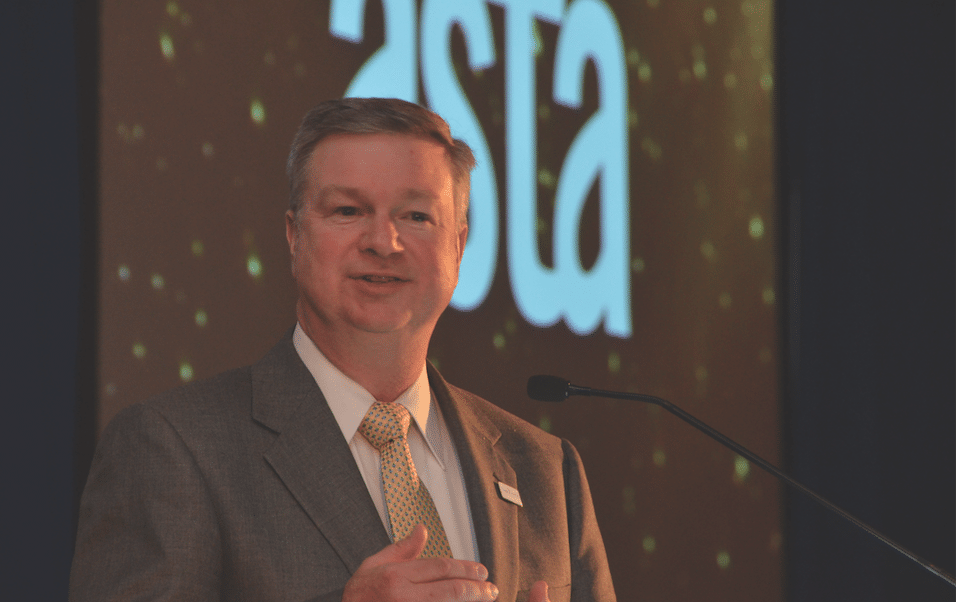He didn’t realize it at the time, but the rural Ohio farm Jerry Flint grew up on provided experience and perspective that still serves him today.
Farms in the 1970s and 80s were diverse, before “diversity” was the cool thing to do. A typical farm may have had some corn, vegetables for a roadside market, a few hogs, a flock of chickens and herd of cows, or some combination. And household income was supplemented by off-farm work. The rural Ohio farm Jerry Flint grew up on was no different, except his father chose to focus on high-value crops: gladiolas, strawberries and fruit trees.
“My father thought that working with high value crops was the way forward — that it would someday allow him to farm fulltime,” Flint recalls, adding that he was a big part of the weed control program in the gladiola fields.
However, the 80s were tough on farm families with interest rates upwards of 21 percent, a production surplus, declining exports and farm debt reaching $215 billion by 1984, double that of 1978. During this time more than 30 percent of U.S. farmers, including Flint’s dad, exited the business in one way or another.
While Flint, who went to get his undergraduate degree in agronomy from Purdue, couldn’t return to the farm, it set the trajectory for his career with farming at the heart of it.
Today, Flint serves as the leader for Corteva Agriscience’s Global Initiatives and Sustainability. In addition, the broader seed industry elected him chair of the American Seed Trade Association (ASTA), 2018-19.
One thing Flint knows from his early days on the farm that still rings true is that every farm is different, and every farmer has a different vision for their farm. The one commonality all farmers share, he says — regardless of whether they are located in the United States, Asia, Africa or South America — is they are looking for that next technology or innovation that’s going to help them achieve their goals.
“That’s what drives me in my career,” he says. “I wake up every day knowing that what I’m doing is truly helping farmers, and that’s very rewarding. It may not always be easy, but it’s what motivates me every day.”
While Flint is not regularly on the farm, sitting down at kitchen tables or in farm shops these days, he’s still working with and for them, just in different ways. At this year’s World Food Prize, he hosted a panel of farmers to discuss top-of-mind issues and the importance of technology and innovation.
Build an Understanding
Flint easily navigates classrooms and boardrooms, relying on skills his mother taught him as a nurse: observe, listen and work to understand the challenge and underlying causes before determining strategies to address it.
“Over the years and through my industry involvement with ASTA, I’ve worked to broaden my understanding of other aspects of the seed industry,” Flint says, adding that he’s thankful for people who took the time to explain different production systems and business environments. “The more I became involved, the more surprised I was about the sheer breadth and depth of the industry and the association — it really does represent everything from alfalfa to zucchini.”
As an ASTA officer, Flint says this presents a challenge, but it’s also an opportunity.
“It’s not just about ‘an issue,'” he explains. “To get this association to work effectively, it’s a deep and broad effort,” where the staff and committee chairs look to engage stakeholders throughout the seed industry and the value chain at all levels (local, regional and national).
Flint credits this diversity to the association’s success as issues and policies are truly vetted before making recommendations to state, federal and even international governing bodies.
It’s this same diversity that Flint looks for when leading teams as part of Corteva Agriscience, Agriculture Division of DowDuPont. Prior to the merger, Flint served as vice president of regulatory affairs for DuPont for eight years.
When we talk about diversity of teams, Flint says it’s not just about race or gender.
“I look at diversity of technical and hard skills, experiences, people who aren’t afraid to speak up and voice their opinion and people who have the experience to tackle hard challenges,” he says. “Diversity makes a huge difference in whether you’re successful in overcoming an obstacle.”
The other piece of the puzzle that Flint says is equally important is the ability to articulate goals and needs.
If a team doesn’t understand what the challenge is or what the objectives are and the parameters, it can really delay progress and prolong the process.
Then, Flint says, you have to give people permission to be wrong.
Risk Doesn’t Always Equal Reward
“If you’re taking risks and putting yourself out there, not every risk is going to pay off,” he says. “You have to strike a balance of trying new things, taking risks and evaluating progress.”
IBM’s Thomas Watson, Sr., once said: “The fastest way to succeed is to double your failure rate.” According to the “Harvard Business Review,” more and more executives are coming to embrace this point of view, coming to understand that failure is a prerequisite to invention.
However, when things don’t go as thought, Flint admits those can be difficult conversations. He also recognizes the importance of knowing when you need to step away and when you need to double down.
Flint has brought this same approach to his work at ASTA, moving up through the ranks from participating in committees to serving on the board and for the past three years as an officer of the executive team.
“One of the things I’ve learned, especially on the policy side, is that you have to work really hard to ensure the lines of communication are open between industry sectors and all the different committees,” he says. “I think that there have been significant improvements during the past five to six years in this area.
“One of the ways we’ve been able to achieve this, thanks to president and CEO Andy LaVigne, is by encouraging the board to more actively participate in the committee meetings especially in key areas that relate to our strategic plan.
“We are able to take the diversity that makes ASTA what it is and leverage it as a strength.”
As an example, Flint says that when trying to reach consumers, ASTA has a broad enough industry base that if the right people are brought to the table, they can make a big difference in showing the value of the seed industry to the broader public.
Flint is a big believer in service: to your community, to your industry and to society. When he was approached about serving as an ASTA officer, Flint says “no” wasn’t even an option. It was more about “how can I make it work?”
“I want to challenge others in the seed industry to think about how they can serve the industry and society,” Flint adds. “Think about what unique skills you possess, what knowledge you have and how can you use it to ensure the next generation is ready to lead the industry forward and tackle the next set of challenges.”













